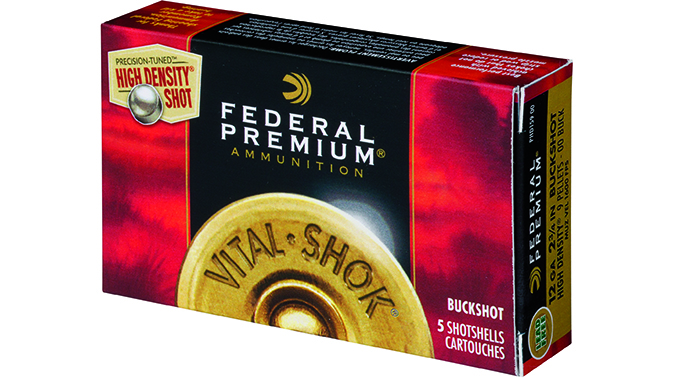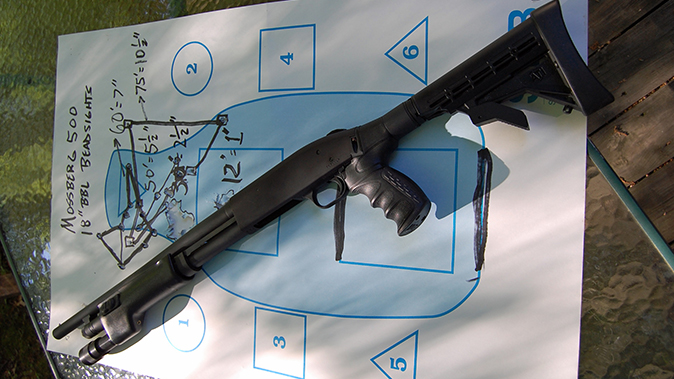Many people have false impressions about shotguns based on gunplay in Hollywood movies. There’s so much misinformation, it doesn’t seem to want to go away. I remember the Howard Hawks Western “El Dorado” starring John Wayne and co-starring a young James Caan as “Mississippi.” John Wayne’s character, Cole Thornton, attempts to aid Mississippi by giving him shooting lessons, only to find his skills deplorable. Thornton takes Mississippi to “The Swede,” where he buys a sawed-off, double-barreled shotgun as a holstered sidearm. In one memorable shootout from the movie, a desperado is taking off down a street when Mississippi lets loose with his scattergun. Although he misses the bad guy with his shot, he hits a sign that falls down and whacks the guy.
Or how about “Open Range,” the 2003 movie starring Kevin Costner and Robert Duvall? Duvall’s character, Boss Spearman, fires at a bad guy outside a shack wall from inside a small room. From a distance of about 8 feet, the double-barreled shotgun blows pie-pan-sized holes through the wall, cutting down his adversary.
Advertisement — Continue Reading Below
Here’s some news: It just doesn’t work like that.
Trial By Fire
So how are buckshot patterns affected by distance and barrel length? We headed out to the range to find out with three representative shotguns. The first was a Mossberg 590A1 with 14-inch barrel, rifle sights and a Davis speed-feed stock. This shotgun is a version of what the NYPD highway officers carry. In many reduced-sized patrol cars, a shorter barrel only makes sense because a traditional 18- or 20-inch-barreled shotgun is simply too big to fit in the passenger compartment.
The next test platform was a Mossberg 500 with an 18-inch barrel and bead sights. This particular shotgun has been outfitted with a SureFire forearm with an integral weapon light as well as an ATI adjustable stock and pistol grip combo. The final shotgun was a Remington 870. This particular shotgun has been customized by 870 maestro Hans Vang of Vang Comp Systems. Vang installed his compensation system on the barrel, back-bored the chamber, extended the magazine, installed a dome safety and sidesaddle spare shell carrier and worked on the action. This shotgun includes a SureFire forearm, a BlackHawk Knoxx Stock and a three-point sling.
Advertisement — Continue Reading Below
All of these shotguns are excellent in my opinion, and I’ve pointed both brands at more than a few criminals in my law enforcement career.
ATK was kind enough to supply 12-gauge fodder for the test. I specifically chose the company’s Federal Premium Maximum load with nine pellets of 00 buckshot. The factory lists the velocity at 1,325 fps. Although my own agency uses a reduced-recoil tactical load, I was curious to see how a full-charge load would fare in these tests. This particular load includes the Federal FliteControl wad, which improves performance in my experience.
Going The Distance
I selected the distances of 12, 30, 50, 60 and 75 feet for the test, as these run the gamut from close range to the maximum distance a standard 12-gauge smoothbore might perform. The rule for shotgun patterning has been that you usually get about 1 inch of spread for every yard from the target. At our distances this would mean:
Advertisement — Continue Reading Below
12 feet = 4 inches
30 feet = 10 inches
50 feet = 16 inches
Advertisement — Continue Reading Below
60 feet = 20 inches
75 feet = 25 inches
From the onset, let’s put this “standard” into perspective. All of the shotguns did substantially better than this. As a matter of fact, all of the shotguns easily kept all nine pellets within a standard 19-inch-wide target at 75 feet. In fact, the widest group fired, using the Vang-Comp-modified Remington 870, measured only 22 inches at 105 feet.
Advertisement — Continue Reading Below
The measurements were taken using the two widest pellets of the 00 buckshot load. I should mention that the stock of the Mossberg 500 prevented me from getting down on the bead sights as much as I would’ve liked, so I tended to shoot a little high using the same center-mass target.
Comparing the results between the Mossberg 500 and 590A1 is pretty interesting, as 4 inches less barrel did not make that much of a difference in the spread pattern. In fact, at 25 yards, the 14-inch-barreled 590A1 produced a pattern 1-inch smaller than the 500. Shooting again at 25 yards, the 18-inch-barreled 500 created a 6.5-inch pattern while the 14-inch-barreled 590A1 produced a 14-inch pattern.
Reading The Results
The vast majority of police shootings are close-in affairs. Since shotguns are deployed in non- spontaneous shootings where law enforcement or military members have the time to access and deploy them, distances in scattergun shootings are going to tend to be longer. If a shotgun is used for clearing rooms by patrol or SWAT personnel, it is fully capable of making a precise shot. All three shotguns created patterns measuring 1.5 inches or less at 12 feet. Even at 30 feet, the maximum spread with this load was 2.5 inches. This means: A) devastating ballistic impact on target; and B) you’ve got to aim the shotgun. All that John Shaft, shoot-from-the-hip, Hollywood crap is just that—crap.
Advertisement — Continue Reading Below
It has also been proposed that, at distances beyond 25 yards, the pellets would not have sufficient energy to stop a suspect or, for instance, penetrate their leather coat. This may be true for reduced-recoil buckshot, but this max-velocity load seemed to have sufficient energy to truly put a hurt on a suspect. Of course, do you want to use a shotgun beyond 25 yards? You can, and it’s nice to know that the spread will not be too large to recklessly endanger a neighborhood. Here it might be better to use a slug.
The Upshot Of Buckshot
What does all this show us? That the 1 inch of spread for every yard rule has pretty much been busted. Even with reduced-recoil 00 buckshot, the “1 inch per yard” pattern seems improbable. Would you get this with birdshot? We didn’t test it because birdshot lacks sufficient energy to penetrate at distances beyond close range and is not carried in serious social shotguns. We also have to understand that shotguns may pattern differently. If you have a personal-defense shotgun or one assigned to you, go out with the load you intend to carry and pattern the shotgun. Learn its limitations so that you can operate more effectively in an actual shooting.
Advertisement — Continue Reading Below
No, shotguns aren’t “alley-sweepers” or “trench brooms.” Inside 25 yards, you can put accurate fire on a suspect with an average spread of about 10 inches. Those nine .33-caliber pellets can have serious impact on a human target, and that effectiveness only improves from 75 feet and in. Movies can be entertaining and those mentioned are worth watching, but don’t look to Hollywood for accurate gunplay.
Performance
| Distance | Mossberg 500 Spread | Mossberg 590A1 Spread | Remington 870 Vang Comp Spread |
|---|---|---|---|
| 12 | 1.00 | 1.50 | 1.00 |
| 30 | 2.50 | 2.25 | 2.00 |
| 50 | 5.50 | 5.75 | 9.00 |
| 60 | 7.00 | 7.00 | 9.00 |
| 75 | 10.50 | 9.00 | 11.50 |
*Distance in feet and buckshot spread in inches.


































